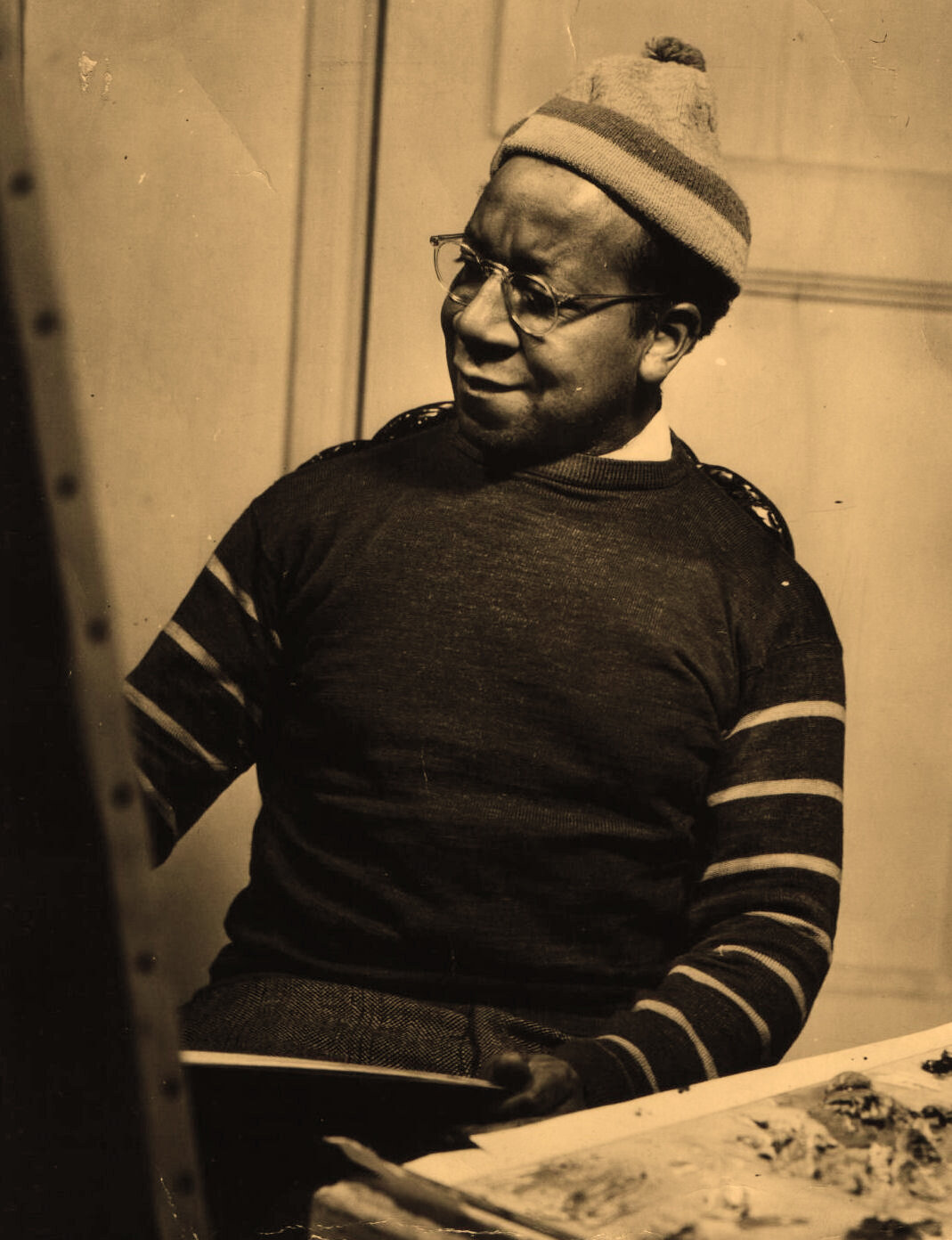Meta Vaux Warrick Fuller
The Celebrated Sculptor of the Black Experience
Portrait of Meta Vaux Warrick Fuller, ca. 1911. And Talking Skull bronze sculpture (1939). Photos courtesy of the Schomburg Center for Research in Black Culture and the Museum of African American History.
Meta Vaux Warrick Fuller was a black American sculptor who expressed the black experience through her art with metaphoric pieces wrapped in symbolism. A major shift in her career came in 1921 when Meta exhibited pieces she created for a New York exposition called America’s Making. She was commissioned by W.E.B. Du Bois and her contribution would figure in the “Americans of Negro Lineage” portion, but Meta was then known as the “sculptor of horrors” for her twisted bronze figures and dark themes. Du Bois, who recognized her talent and abilities, wanted something more practical and representative of black culture from the artist. Meta obliged and went on to create her most famous piece, Ethiopia.
Born Meta Vaux Warrick in Philadelphia, Pennsylvania on June 9, 1877, Meta grew up in a middle-class family and was allowed privileges few blacks enjoyed during the Jim Crow era. She was the youngest of three children, and was named for the Greek word, meta, signifying “change” or “alteration”—though the name is pronounced mee-tah according to her grandson, Dr. John L. Fuller, Sr. Her mother Emma (Jones) Warrick was a wig maker and hairstylist whose clientele were upper-class white women. Her father William H. Warrick was a barber and caterer. Both of her parents owned businesses and were successful, which was rare for Philadelphia blacks at the time.
Meta had an early education in art at home. Her older sister Blanche studied art and her father had an appreciation for sculpture and painting. Meta also furthered her art studies when she attended a segregated high school in Philadelphia in the early 1890s. She exhibited a high school project at a Chicago world’s fair called the World Columbian Exhibition in 1893, and on the strength of it was awarded a scholarship to study art and design in a selective program at the Pennsylvania Museum and School of Industrial Art taught by J. Liberty Tadd. This is where she was introduced to techniques in sculpture. She earned a diploma and became a certified teacher in 1898, and made plans to sail to Paris the next year to pursue postgraduate art studies.
Meta made arrangements to stay at the American Girls’ Club while overseas, but after sailing across the Atlantic, she was refused lodging by the director of the boarding house due to her skin color. Meta found other accommodations and the director of the boarding house introduced her to various art teachers. This led to Meta meeting Raphael Collin and Jean-Antonin Carles, two sculptors she studied with the next year, with a focus on drawing and anatomy.
Auguste Rodin’s The Thinker (Le Penseur). Photo courtesy of the National Gallery of Art.
Before leaving Paris, Meta approached Auguste Rodin—the French artist considered the founder of modern sculpture and the man behind the Thinker. Meta wanted Rodin to critique her work. When it became public knowledge that he was impressed, Meta’s sculptures garnered more recognition and attention in Paris. Things changed when she returned to Philadelphia in 1903. Due to prevailing racism and gender-based discrimination, Meta was ostracized from the U.S. art scene and was unable to sell her pieces. But like many of her forebears, Meta persevered and was later rewarded.
Meta made history in 1907 when she became the first black American to receive an art commission from the U.S. government. She created the Warrick Tableaux, which consisted of fourteen dioramas for the Jamestown Tercentennial Exposition, celebrating three hundred years since its founding. Despite the commission and the groundbreaking work she produced, Meta was not in demand and therefore did not achieve financial success. Two years after the Jamestown exhibition, Meta married Dr. Solomon Carter Fuller, the first black person to practice psychiatry in the U.S. He was a neurologist at Massachusetts Hospital. Meta and her new husband moved to Framingham, Massachusetts, and had three sons.
Though she was expected to be a settled wife after marrying, Meta continued to pursue her art career while balancing family life. Shortly after the birth of her first son, Solomon Jr., a fire broke out at the Philadelphia warehouse that was home to Meta’s artwork, which spanned sixteen years. She began housing the collection in the warehouse after returning from Paris, but the bulk of her work was lost. Meta was so devastated she abandoned art for a few years.
Meta Vaux Warrick Fuller’s multi-figure sculpture Emancipation on display at Harriet Tubman Square in Boston, MA. Originally created in plaster for the 1913 Emancipation Proclamation exhibit, it was cast in bronze in 1999, more than thirty years after Meta died. Photo courtesy of Erin Clark/The Boston Globe via Getty Images.
W.E.B. Du Bois came calling in 1913, and he commissioned Meta to create an exhibit for the fiftieth-anniversary celebration of the Emancipation Proclamation abolishing slavery to be held in New York. The result was Meta’s multi-figure piece titled Emancipation. Du Bois sought Meta’s artistry again in 1921 for the aforementioned America’s Making Exposition in New York. Her Afrocentric themes celebrated black culture, did away with dated stereotypes, and chronicled the black experience, which established her as an important member of the Harlem Renaissance.
In the years that followed, Meta continued to sculpt, write poetry, and paint, adding to the preserved body of work that grew to include intimate portraits of family and friends, studies, ephemera, process art pieces, and sculptures fashioned in plaster, wax, and bronze. Meta’s devotion to her family was greater than her art, and when her aging husband suffered health issues and lost his sight, she became his full-time caregiver until the day he died in 1953 at the age of 81. Only then—being a woman in her late 70s—did she resume her art career.
Meta exhibited her work until 1961, the year of her last show at Howard University in Washington, D.C. Meta passed away at Cushing Hospital on March 13, 1968, in Framingham. She was cremated at Newton Cemetery & Arboretum three days later, per their records. She was 90 years old. Meta has since garnered posthumous recognition and support. A large majority of her art is held by private collectors, while the largest public collection can be viewed at the Danforth Art Museum at Framingham State University in Massachusetts.
______________________
Correction: A previous version of this article mistakenly said that Meta died on March 16. This was likely due to an article from 1996 that had the wrong date. A big thank you to commentor, Toni, for the update.
You may also be interested in:

This article appears in 45 People, Places, and Events in Black History You Should Know.
Available from Amazon.com, BN.com, and other retailers.





Orphaned at a young age and discriminated against for the color of his skin, Paul Revere Williams became one of the most renowned architects in history.